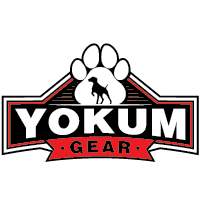Feeding is one of the essential aspects of a dog's daily routine, and choosing the right feeder can significantly impact your furry friend's health and happiness. With a myriad of options on the market, from simple bowls to high-tech feeders, selecting the perfect feeder involves understanding your dog's unique needs and lifestyle. This article will guide you through the various factors to consider when choosing the ideal dog feeder.
Types of Dog Feeders
Dog feeders come in various styles, each offering different benefits. Here, we explore some of the most popular types:
Traditional Bowls
Traditional bowls are the most common type of feeders. They come in various materials such as stainless steel, ceramic, and plastic. Stainless steel is durable and easy to clean, while ceramic bowls are heavier and less likely to be tipped over. Plastic bowls are lightweight but can harbor bacteria if not cleaned properly.
Elevated Feeders
Elevated feeders consist of raised platforms with built-in bowls. These feeders are particularly beneficial for large breeds and older dogs who may have joint issues, as they reduce strain on the neck and spine.
Slow Feeders
Slow feeders are designed with obstacles inside the bowl to slow down fast eaters. Eating too quickly can lead to digestive issues such as bloating and vomiting, so these feeders promote healthier eating habits.
Automatic Feeders
Automatic feeders dispense food at set times, making them perfect for pet owners with irregular schedules. These feeders can help with portion control and ensure your dog is fed even when you're not home. Some advanced models come with programmable features and smartphone connectivity.
Interactive Feeders
Interactive feeders combine feeding with mental stimulation, as they often require the dog to solve a puzzle to access the food. These feeders are great for dogs that need mental exercise and can help alleviate boredom.
Factors to Consider
When choosing a dog feeder, consider the following factors to ensure you select the best option for your pet:
Size and Breed
The size of the feeder should correspond to your dog's size. Smaller breeds will require smaller bowls, while larger breeds necessitate bigger ones. Additionally, the feeder's height should be appropriate for your dog's breed, especially if you opt for an elevated feeder.
Material
The material of the feeder affects its durability and hygiene. Stainless steel is a popular choice due to its robustness and ease of cleaning. Ceramic bowls, while sturdy and aesthetically pleasing, are prone to breakage. Plastic bowls should be BPA-free to avoid health hazards but tend to scratch easily, potentially harboring bacteria.
Feeding Habits
Consider your dog's eating habits. Fast eaters can benefit from slow feeders to prevent digestive issues. If your dog is prone to boredom or requires mental stimulation, an interactive feeder may be ideal.
Health Concerns
Dogs with specific health concerns may need special feeders. For example, older dogs or those with arthritis would benefit from elevated feeders to minimize neck and back strain. Consult your veterinarian to determine the most suitable feeder for any health issues your dog might have.
Cleaning and Maintenance
Regular cleaning of the feeder is crucial to prevent bacterial growth and maintain hygiene. Stainless steel and ceramic bowls are generally dishwasher safe, making them easier to clean. Some automatic feeders have removable parts for easy washing, but always check the manufacturer's cleaning instructions to ensure the longevity of the feeder.
Conclusion
Choosing the perfect dog feeder involves considering your dog's unique needs, habits, and health concerns. Whether you opt for a traditional bowl, elevated feeder, slow feeder, automatic feeder, or interactive feeder, ensure the choice promotes a healthy and happy feeding experience for your furry friend. Investing time in selecting the right feeder will pay off in the form of a healthier, more content dog.

